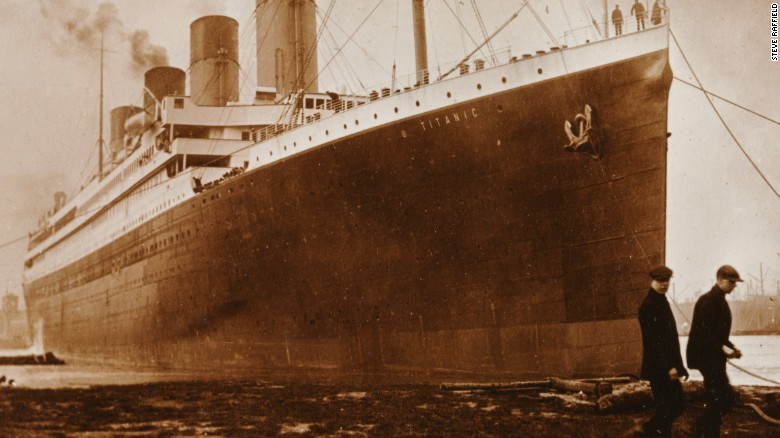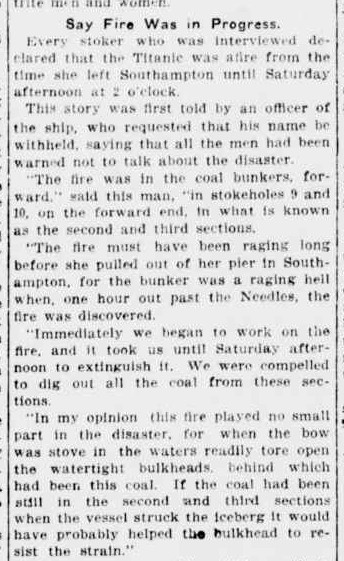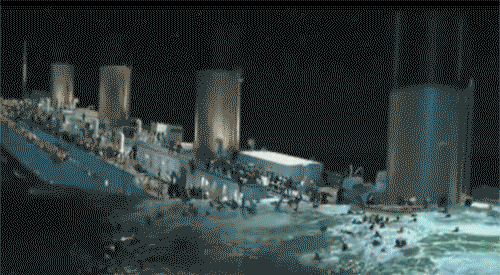An Iceberg Didn’t Sink The Titanic
by DavidCline@omgfacts.com, 8 years ago |
5 min read
New photographs suggest an alternate theory.
Ask anyone on the street why the Titanic sank and you’ll get the same answer: “It hit an iceberg.” As explanations for catastrophes go, this one is concise and straightforward. It’s man versus nature, plain and simple. Thanks in no small part to the film, it’s this account of how things went down that fateful night in the North Atlantic that’s stuck in the popular imagination. But according to new evidence brought to light by journalist and Titanic historian Senan Molony, it also might be wrong — or, at least, it may not be the whole story. In his new documentary, “Titanic: The New Evidence,” Molony argues that while the collision with the iceberg undoubtedly played a role in sending the Titanic and more than 1,500 of her passengers to the bottom of the ocean, it was a smoldering coal fire, burning for days before the ship even set sail, that turned what would’ve otherwise been a survivable collision into a fatal one. Photographs discovered in an attic in Wiltshire in southern England form the basis of the theory. Taken by the Titanic’s engineering chief only days before the ship left its yard in Belfast, the photos reveal a dark, 30-foot-long mark on the hull’s front, starboard side, very near where it would later collide with the iceberg.


Question: What was the condition of the bulkhead running through the bunker?
Barrett: It was damaged from the bottom.
Question: Badly damaged?
Barrett: The bottom of the watertight compartment was dinged aft and the other part was dinged forward.
Question: What do you attribute that to?
Barrett: The fire.
Question: Do you mean to say the firing of the coal would dinge the bulkhead?
Barrett: Yes.Because it’s damn near impossible to put a positive spin on “1,500 people drowned or froze to death, and we absolutely could’ve prevented it,” Molony concludes the White Star Line downplayed the effects of the fire during the investigation in order to save face. “It’s a perfect storm of extraordinary factors coming together: fire, ice and criminal negligence,” he says, but not everyone is so convinced. David Hill, formerly of the British Titanic Society, has come out against the theory. “When the Titanic hit the iceberg … it created a 300-foot-long line of damage on the starboard section,” he explained to The New York Times. “There certainly was a fire. Was it a life-changer? It’s my personal opinion that it didn’t make a difference.” Regardless of what ultimately torpedoed the largest ship ever to sail, the magnitude of the tragedy and its overseers’ heedless stupidity is undeniable. Whichever way you slice it, it seems like the unsinkable ship was actually doomed from the start.
✕
Do not show me this again
